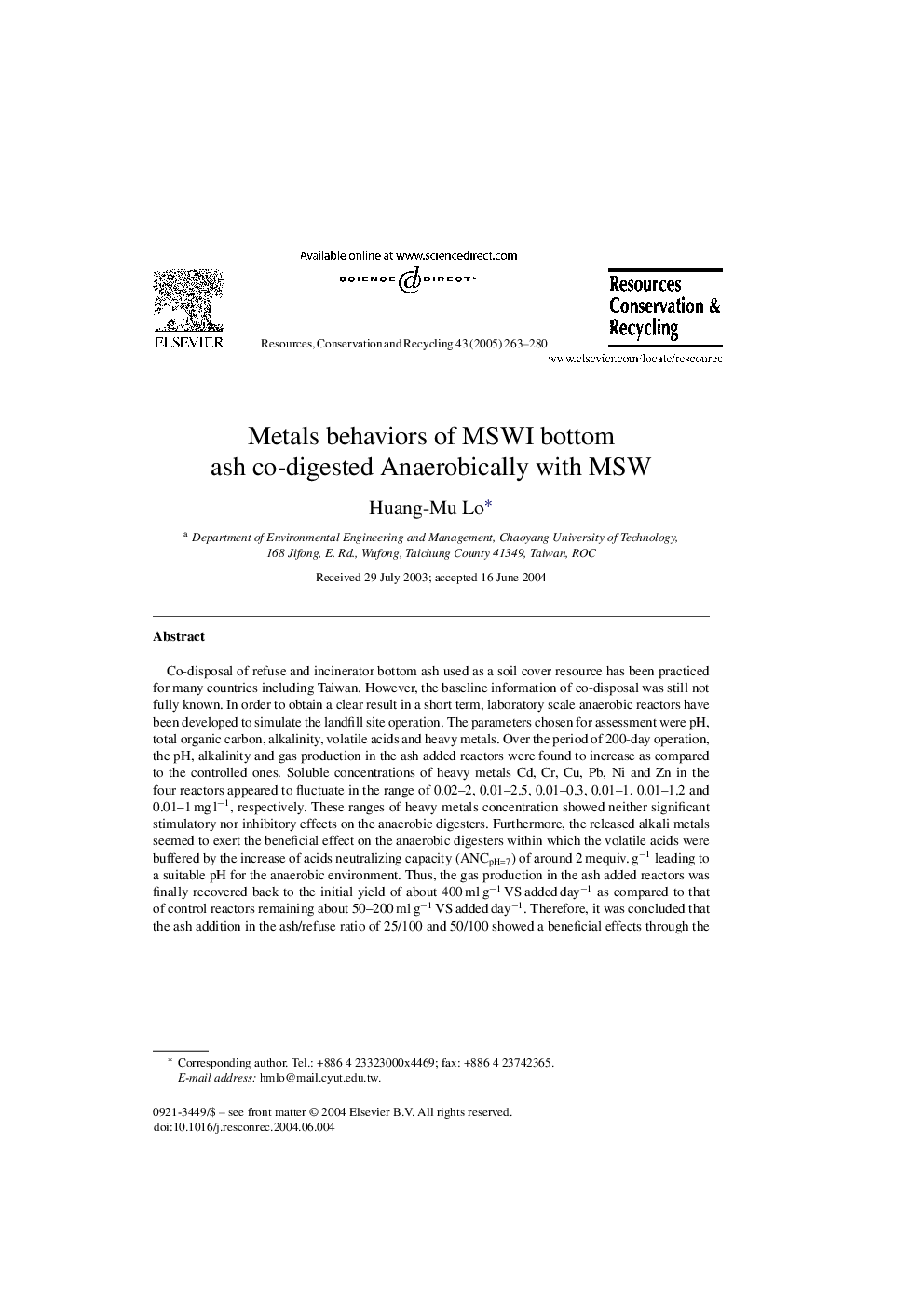| Article ID | Journal | Published Year | Pages | File Type |
|---|---|---|---|---|
| 10508262 | Resources, Conservation and Recycling | 2005 | 18 Pages |
Abstract
Co-disposal of refuse and incinerator bottom ash used as a soil cover resource has been practiced for many countries including Taiwan. However, the baseline information of co-disposal was still not fully known. In order to obtain a clear result in a short term, laboratory scale anaerobic reactors have been developed to simulate the landfill site operation. The parameters chosen for assessment were pH, total organic carbon, alkalinity, volatile acids and heavy metals. Over the period of 200-day operation, the pH, alkalinity and gas production in the ash added reactors were found to increase as compared to the controlled ones. Soluble concentrations of heavy metals Cd, Cr, Cu, Pb, Ni and Zn in the four reactors appeared to fluctuate in the range of 0.02-2, 0.01-2.5, 0.01-0.3, 0.01-1, 0.01-1.2 and 0.01-1 mg lâ1, respectively. These ranges of heavy metals concentration showed neither significant stimulatory nor inhibitory effects on the anaerobic digesters. Furthermore, the released alkali metals seemed to exert the beneficial effect on the anaerobic digesters within which the volatile acids were buffered by the increase of acids neutralizing capacity (ANCpH=7) of around 2 mequiv. gâ1 leading to a suitable pH for the anaerobic environment. Thus, the gas production in the ash added reactors was finally recovered back to the initial yield of about 400 ml gâ1 VS added dayâ1 as compared to that of control reactors remaining about 50-200 ml gâ1 VS added dayâ1. Therefore, it was concluded that the ash addition in the ash/refuse ratio of 25/100 and 50/100 showed a beneficial effects through the increase of pH, alkalinity and gas production. These phenomena indicated that using bottom ash as a soil cover might obtain the potential positive effects on landfill practice.
Related Topics
Physical Sciences and Engineering
Energy
Renewable Energy, Sustainability and the Environment
Authors
Huang-Mu Lo,
